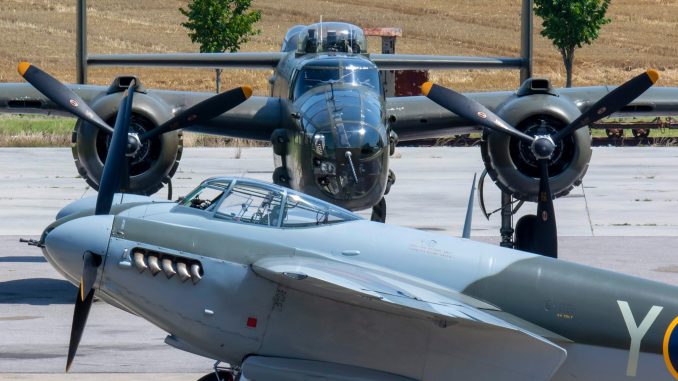
“Welcome to the South Pacific!”
by Lynn Ritger
Photos by Lynn Ritger, Kenny Reese and Ricardo von Puttkammer
Standing in a sweat-soaked flight suit in the midst of our encampment with its 48 star garrison flag snapping proudly in the stiff breeze above our heads, this was our greeting to visitors during the Military Aviation Museum’s first “Virginia Warbird Weekend” held on the 19th and 20th of June, 2021. With the regular correspondent unavailable for the weekend, Warbird Digests’ Moreno Aguiari reached out to me to provide a show recap from a unique perspective – that of one of the dozens of living historians and re-enactors who are very much part of the show.
Anyone familiar with vintage aircraft operation understands that operating these beautiful aircraft which we all love requires dedication, constant physical effort, and (more than) an occasionally obscene amount of money. What people may not realize is that a similar level of commitment applies to those of us who set up re-enactor camps at shows like those on view at the Military Aviation Museum events (and those at the Mid-Atlantic Aviation Museum in Reading, Pennsylvania). We spend hundreds of hours researching the history of not just the units we choose to represent, but those who would have been co-located in the same Theater of Operations. This also extends to the opposing forces and “our” unit’s place within the grand scheme of the theater of the conflict we are representing. This involves many, many thousands of dollars collectively expended on tents, equipment, uniforms, insignia, vehicles – anything that would help add authenticity to the encampment and help us tell the associated stories.
As an example, for the WWII show, our group, the Old Dominon Squadron of the Airmen’s Preservation Society, sets up to represent the immortal “Jolly Rogers” of VF-17, the US Navy’s oldest, continuously active squadron, to help tell the story of Lt. (JG) Shelton “Ray” Beacham, who hailed from Kitty Hawk, North Carolina. Indeed, the Military Aviation Museum’s own FG-1D Corsair is painted to represent Beacham’s F4U-1A BuNo 17668 White 31, the aircraft in which the aviator scored the first aerial victory for the Jolly Rogers. Our goal was to help provide the context behind Beacham’s service so that Museum visitors might better understand the significance of that aircraft. Given how popular the Corsair is, we fielded a lot of questions from visitors about the aircraft and the unit, and had the good fortune to have a few actual VF-84 veterans come through the camp who invariably broke into a huge grin when they saw the FIGHTING 17 sign on our HQ tent!
The number of people flowing onto the Museum’s grounds over the weekend was both astonishing and gratifying; in talking with tired but elated Museum director Keegan Chetwynd on Saturday night, attendance was well into the thousands in spite of temperatures being in the 90s and a heat index north of 100°F. At times on Saturday, it felt a bit like a warbird-themed Disneyland, as there were just so many people! The food vendors saw lines more than 50 people deep for much of the day. But best of all, the vibe from everyone we met was one of profound enjoyment, even gratitude, and this positive sensation extended to Museum volunteers and staff, and every single one of us out in the living history encampments. Indicative of how much the Museum values the contributions of their volunteers and living historians, each morning Keegan brought 20 lb bags of ice to each encampment along with an entire box of pastries for each unit, and a cookout was held for all of the other show volunteers later in the day. That sort of understanding just doesn’t happen anywhere else, and is another reason we love participating in shows at the MAM so much… they genuinely appreciate our efforts and our contributions.
The flying displays over this past weekend were perhaps more intermittent than the typical Warbirds Over The Beach events which the museum has held in the past, but this did not detract from the show – on the contrary, this allowed visitors a bit more time to explore the Museum and the camp displays without feeling like they needed to be anchored to their chairs awaiting the next exciting takeoff.
Sunday’s attendance was also very good, but not as big a crush as Saturday, perhaps due to the remnants of tropical storm Claudette whose outermost edge began affecting the field at around 1pm. Rain started to move into the area by 3pm, after which Museum staff decided to bring the show to a close to avoid the potential problems which could have followed. To close out the show, the Museum’s P-51D Mustang, marked as Double Trouble Two, put on one of the most energetic displays seen in quite a while at the MAM (all within FAA-mandated limits, of course). The crackle and roar of that aircraft’s beautifully maintained Packard Merlin rang out across the field as the Mustang raced around below the low ceiling – it was wonderful to experience, and brought the show to a fittingly climactic conclusion.
For those of us who spent three days on the grounds, camped out on wartime cots beneath a hot canvas, the show was an absolute triumph. Living history is a deep and abiding passion for each of us who take part in these events, and we always look forward to being able to tell the stories of the men and women our groups represent. Speaking for our group, we recognize there is a lot of responsibility in representing such a storied unit as the Jolly Rogers, particularly when that squadron is still on active duty nearby at NAS Oceana, and we take that responsibility very seriously. I have combed through unit War Diaries and ACA (Air Combat Action) Reports from November 1943 through May 1944 for COMAIRSOLS (Commander, Air – Solomons) looking not just for reports from VF-17, but from other units co-located at Torokina on the west coast of Bougainville during the first months of 1944… that included VMF-215, who supplied the ground personnel to maintain the Jolly Rogers’ Corsairs, and they did a magnificent job. I have also made the drive down to the Dare County airport at Manteo, where I made copies of the original VF-17 combat reports for January 30, 1944 – the day Ray Beacham put his Corsair in the water off of Torokina due to combat damage sustained during that day’s mission to Rabaul. I have also spent hours scouring the internet for maps of the area, and was fortunate to find scans of the original 8” x 8” target and approach maps for Rabaul itself, as well as for Lakunai, Tobera, and Vunakanau airfields produced by the N.A.C.I. Hydrographic Office. I cleaned these up, sized at 300dpi, and printed out copies for the other guys in my unit to carry along with their original Felsenthal Mark III plotting boards, which I was fortunate to find several years ago. Since I can’t afford a real wartime plotting board tray, I built a replica of one out of wood, covered in aluminum furnace tape, sprayed flat black then scraped and knocked around to look like the real thing. I also hand-painted a copy of the sign which hung over the VF-17 ops shack door at Ondongo on their first tour in November/December ’43, to hang out in front of our own “ops shack”- a 10’ x 12’ square white canvas tent, hand-sewn by our northernmost member, Joe Hannon, with framing built by our group’s “infrastructure expert”, Rob Friar.
Speaking of Rob and Joe, I cannot emphasize strongly enough how much of a team effort this is. Each of us brings our particular strengths to bear in the preparation, setup, execution, and teardown of an event. Rob focuses upon the enlisted personnel, particularly the guys in supply and the mess cooks. He always handles mess duties at a show, with a period gas stove and cookware. He’s even obtained wartime Navy cookbooks from which he prepares actual meals served to crews in the 1940s. It doesn’t hurt that he’s a great cook, either! He also does most of our fabrication work, building tables, chairs and even entire tents. As already noted, Joe hand-sewed our current 10’ x 12’ HQ tent based on a WWI pattern which was also occasionally seen in the Pacific Theatre, and he also helps track down artifacts, uniforms, etc. He drives all the way from New Hampshire to take part in the shows, which is just a phenomenal level of dedication! I handle research, coordination with show planners, and all the other various ‘administrivia’ which needs doing in order to make it a smooth-running show. We have other members who join us when they’re able: John Hamann, for instance, is a Navy reservist with an outstanding collection and encyclopedic knowledge of WWII aviation history. Kenny Reese is a former Navy AO with a passion for US Marine Corps aviation. Kevin Shortell on the other hand, his grandfather was LCDR Ron Hoel, XO for VF-8 and a Hellcat ace, so Kevin’s gear is tailored to represent his grandfather. Mike Wilburn is one of our newest members, and he has years of experience in reenacting circles from the Renaissance era up through the Civil War; he frequently makes his own uniforms and period clothing to a very high standard. Dr. William Krause and his wonderful wife Sharon represent the medical side of the Navy; Sharon is a nurse by trade and Bill is a surgeon, whose dad flew OS2U Kingfishers; his uncle flew Corsairs with VBF-88 off USS Yorktown and was killed during the war. For my part, my dad, John Ritger, served aboard USS Sealion (APSS-315) as a machinist’s mate from 1962 to 64. My father-in-law Ed Utz did four WESTPACS on USS Hancock (CVA-19) from 1971 to 75, and my grandfather-in-law Paul Utz was a torpedoman and plank-owner aboard USS Spot (SS-413) with three combat patrols. Furthermore, my paternal grandfather, Marcus Ritger, was a draftsman at the Newport News Shipyard from 1936 until the day he died in 1975; he served his apprenticeship helping to lay the Douglas fir decks of the original USS Yorktown and Enterprise aircraft carriers.
Each of us has a story to tell, whether it is of our own service, in the case of Kenny and John, or that of family members such as Kevin, Bill, and myself. More to the point, each of our visitors often has a story to tell as well. The aircraft which are the centerpiece of the air show each represent the efforts of the pilots and crews which flew and serviced them during the war, and we see our role as adding context to those efforts, helping to give air show visitors a small glimpse of the conditions in which those men and women lived and worked.
And to the eternal credit of Jerry Yagen and the entire team at the Military Aviation Museum, they find tremendous value in having us as part of the show. Units come from all over the country to take part in shows put on by the MAM, representing almost every major combatant. In the 12 years I have been doing this, I’ve seen groups and individuals representing American, British, Canadian, Australian, Polish, German, Soviet, Chinese and Japanese combatants as well as French partisans, and of course civilians in period attire. And in my experience, the crowd universally appreciates it, as they come through our camp and talk with us, we have heard some amazing stories. A case in point occurred at this past weekend’s show; a kind, elderly gentleman came through with his son, and we started talking with him. It turned out that his name was LCOL Harold Hadder, and he had flown 75 missions in F-80Cs with the 16th FS, 51st Fighter Wing out of Suwon during the Korean war. He also flew some 200 missions in A-1 Skyraiders with the 6th Special Operations Squadron in Vietnam, serving as that unit’s CO between May and November 1969. Listening to him talk about the flak around Pyongyang and how much fuel he had to carry to get from Suwon to the Yalu was just incredible! We met another man who worked for Grumman at Bethpage in 1942 before joining the Navy and then working on the same Wildcats he had been building six months earlier – that man actually met “Butch” O’Hare when he came to Bethpage on a war bonds tour after his epic defense of USS Lexington in early 1942! We got to shake the hand of a man who had actually met Butch O’Hare – how incredible is that? And we hear stories from regular men and women, whether about their service or that of a relative – the latter are often our most meaningful encounters, because the men and women who defeated Hitler, Mussolini, and Hirohito rarely spoke much about their service after they got home. They just saw it as a job to finish before getting on with their lives, so our conversations with their family members are often poignant. As an example from 2013, when the Boeing B-17 known as the Movie Memphis Belle came out to Chesapeake, three of us got our USAAF gear and set up a small display in front of the airport terminal to talk to visitors. As I was struggling to get into my 1945-vintage alpaca lined flight pants (this was in July – those are not super comfy in July), a woman came out of the terminal and suddenly her hands flew to her face in shock. I asked if she was ok, and she said, “Is that what my daddy looked like?” As I started to explain that yes, if he flew on a Fortress, this is the sort of gear he would have worn, she stopped me and said, “Can I give you a hug?” It turned out that her father was a top turret gunner/engineer on B-17s during the war, and had passed away two weeks prior…
That was the moment I realized this is bigger than me. This isn’t about “playing dress up” or keeping Halloween rockin’ all year long – when we don those old uniforms and flight gear, we take on a responsibility to learn about the service lives of those who wore them nearly a century ago… or longer, and to be able to educate the public on what those men and women experienced in the service of our country. Yes, it’s a lot of work, and a lot of fun – and yes, there are certainly times when the “Walter Mitty complex” can take over when we’re doing photo shoots – but each of us understands the reason why we are there is to give air show visitors a glimpse into the past, and perhaps have them leave with a little more knowledge than they had before. And we are incredibly grateful that the Military Aviation Museum understands the value of that effort, and supports us so well in our efforts. We are already looking forwards to the fall Warbirds Over The Beach show – for that event, our group will be taking it all the way back to late September 1918, in the mud of Bethelainville, France, where we will represent the 90th Aero Squadron of the United States Army Air Service. We can’t wait to get back out there!
A special thanks to Lynn Ritger and Ricardo von Puttkammer for helping with the drafting of the article and the photos. For more information about Ricardo’s work visit www.aviationphotojournal.com


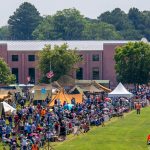
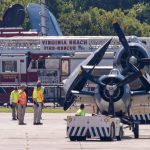
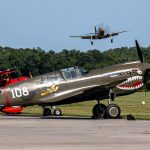
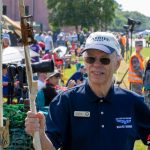
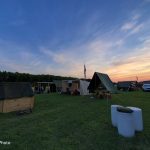
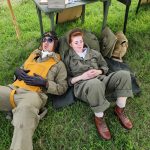
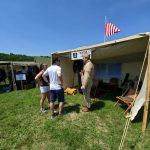
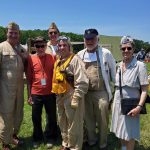
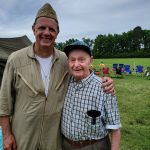
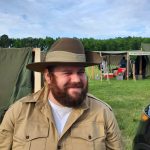
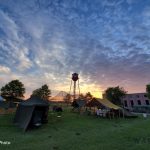
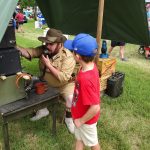
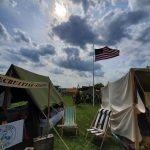
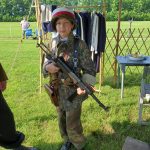
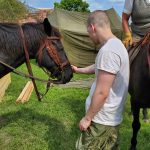
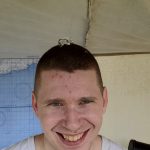
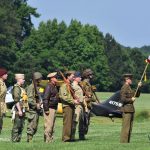
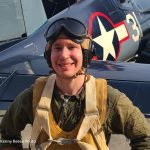
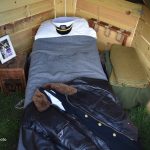
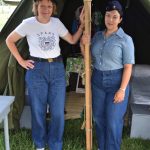
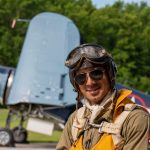
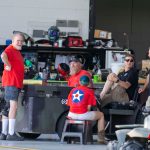
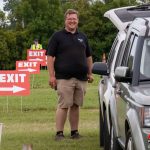
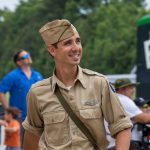
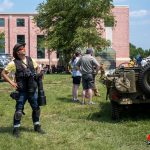
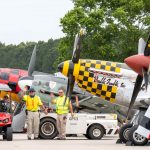
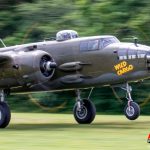
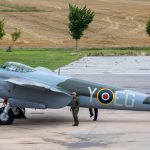
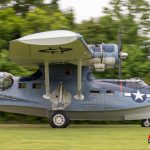
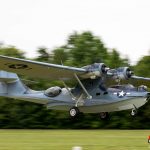
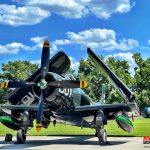
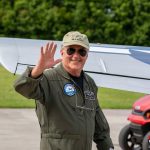
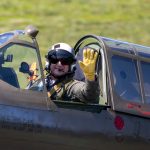
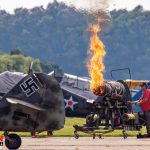
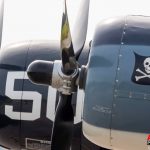
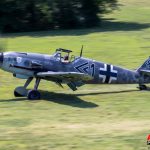
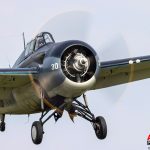
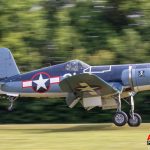
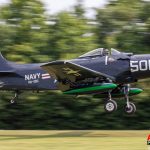
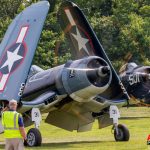
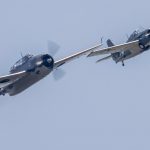
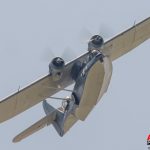
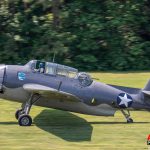
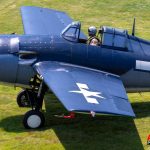
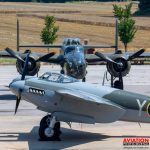
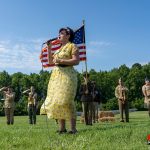
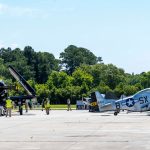
Be the first to comment
Graphic Design, Branding and Aviation Art